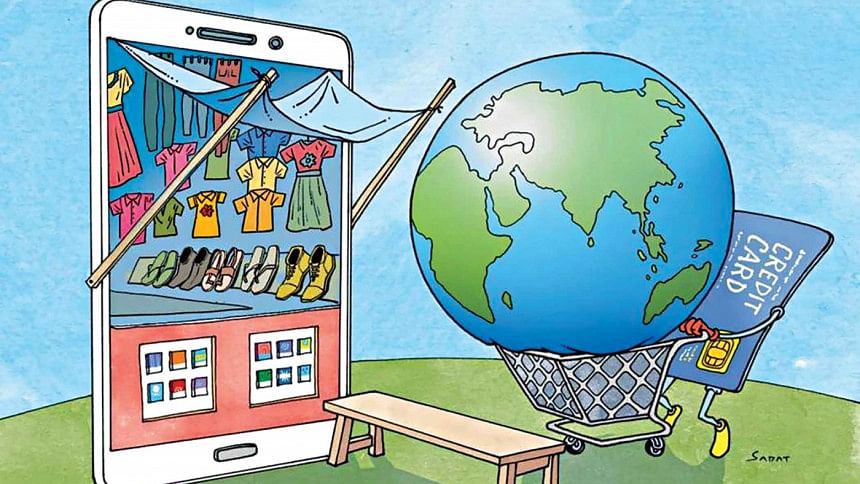How technology is changing business

Now that 2020 is over, it has become clear that things will not go back to how they used to be. Rather we will gravitate towards a new normal. And in this new normal technology will play a major role in every facet of our lives. Even the way companies operate will be impacted by technology. In this article, I will try to highlight and explain the key changes that technology will bring in how we do business.

First, let us explore the new trends that have been coming up, both as a result of the pandemic and also organically in the last few years. One of the major and obvious ones is the emergence of online marketplaces, connecting anyone who has a service to offer to anyone who needs the service—the Uber economy, as it has been coined in many places. And though this might seem a trivial thing today as we have become used to online marketplaces, imagine if in the late 90s anyone would believe that you have a business that does not produce any products or services, but rather connects people! As a species, we have moved very close to a collaborative consumption society—instead of buying a hammer to just put a painting on the wall, we would rather pay for the service of the hammer from someone who has it. And these marketplaces are increasingly covering more and more services—legal counsel, mental health counsel, telemedicine, and many others. And as more and more of these marketplaces come up, and people become used to them, the large corporations, and the brick and mortar giants, will find themselves changing their core business models—either create their marketplaces or start booking shelves in these online marketplaces. This trend will also create new business opportunities for support industries for these marketplaces—telecoms, delivery and shipping, online transactions, and cybersecurity. Also, the concept of platform-driven business models will slowly gain more popularity and would come to dominate many traditional business models. In a platform business model, it is all about the size of the platform that determines the value of the business. These online marketplaces need to gather the critical mass of buyers and suppliers to generate profit and ensure sustainability—a concept very similar to that of active users in social media platforms today.

Another trend, that started before the pandemic, but was accelerated by the pandemic, is the digitisation of financial services, especially even for those who are not part of the formal banking system. Mobile wallet applications, digital payment platforms and many other apps for the digitisation of financial services offered by banks and NBFI have risen. Interestingly, this is a trend that is not mutually exclusive of the online marketplace trend, but rather these two complement each other. The impact of this trend is that classical financial businesses need to re-think their day to day operations, the portfolio of services they offer, and the nature of partnerships they have with different payment services and platforms. In quite a few countries around the world, online marketplaces are partnering with banks to introduce online purchasing with instalment plans—facilitating the growth of the marketplace and at the same time tapping a new sector of customers. Technologies such as mobile banking, QR codes, phone wallets (like Apple pay and Google pay), will shift the nature of transactions in many businesses. On the other hand, new financial business models such as peer to peer lending platforms and loan aggregators are becoming more commonplace.

Last but not the least, a major trend, that again is complementing and being complimented by the other trends, is the accumulation and utilisation of massive amounts of data in business decision making and strategy. As technology is introducing new business models and marketplaces, every transaction, every product view, every service review, every shopping cart, every cancelled order, all are data. At the outset of the century, terabytes were considered a large volume of data, and today the data we have cannot be limited to even petabytes and zettabytes! And this trend of data will significantly change the way we do business. Previously data used to be a supporting and monitoring function in a business. For concepts such as just-in-time inventory management and lean operations, a real-time idea of stocks needed to be monitored. For planning out capacity, forecasting sales, the impact of campaigns and strategies, data analysis was used to gauge impact and help in planning. But with the emergence of these trends, data is going to play the strategy driving force in businesses. The insights from data can help understand market segments, group behaviour, understand the nature of campaigns required, and many other things. Instead of data supporting a decision, it will be data that helps an organisation identify the nature of decisions to make. But at the same time, this prevalence and proliferation of data will also lead to (and has already led to) many data protection policies and regulations. So businesses will need to understand the impact of existing and the incoming policies related to data privacy and protection and build their business model around that, at times working very closely with regulators.
As an overall trend, technology is making the world more and more borderless. But at the same time, governments around the world will be drawing up new boundaries in terms of regulations in this digital space. And this is one of the trends that will dominate the next five to 10 years—as new businesses either have to be very aware of the impact of these regulations (like many social media companies are trying to work very closely with regulators) or need to develop business models which are anti-fragile to these regulations. Data is and will be impacting these changes and shifting the paradigms of the digital business models, as technology becomes more powerful and also accessible. In the face of these trends and changes, businesses need to focus on two important approaches to survive and gain a competitive advantage: i) Redefine what creates value for their customers. This would require changing their perception of the customer, understand that the new customer can be different from the old one, and understand how to add value to the new customer. In the end, customers will be willing to pay if the value is created, and with technology, marketplaces are global, switching costs are low, so value becomes all the more important; ii) Be bold to take steps to change the established status quo. Sometimes, having minor changes and stopgap solutions might not be the way to go forward, and since nature and the paradigm of business is going through a massive shift, businesses need to be able to pivot their models and make bold decisions.
Khan Muhammad Saqiful Alam, Commonwealth Scholar, National University of Singapore, is Analytics Adviser, Intelligent Machines Limited.

 For all latest news, follow The Daily Star's Google News channel.
For all latest news, follow The Daily Star's Google News channel. 



Comments